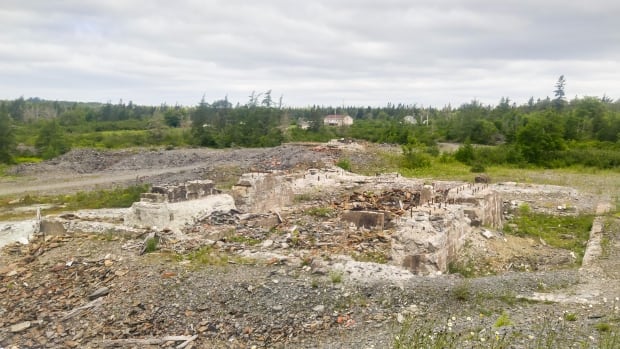
The Nova Scotia government wants to acquire one of the province’s two most contaminated historical gold mines so it can clean it up.
The Goldenville site, located near Sherbrooke on the Eastern Shore, was the most productive of Nova Scotia’s 64 historical gold mine districts. It was mined from 1862 to 1941 and included as many as 19 different open pit and underground mines.
Those operations left a legacy of arsenic and mercury contamination that persists to this day, both in the material and water at the site and downstream all the way to the Atlantic Ocean.
Through the provincial environmental cleanup agency, Nova Scotia Lands, the government has been developing plans to remediate Goldenville. It estimates cleaning up that site as well as the other most contaminated former mine, Montague Gold Mines, will cost at least $60 million.
But the plans for Goldenville hit a snag a couple of years ago when staff realized the property that included the source of the contamination — the stamp mill that crushed ore before gold was extracted — was not Crown land. The province would need permission from the landowner to conduct its work.
That’s when things got even more complicated. Staff discovered that nobody knows who owns the property.
Nova Scotia’s property registry lists the owner of the 32-hectare parcel of land at 34 Goldenville Road Extension as “owner unknown.” The parcel has an assessed value of $21,400.
The province has sought information about the history of the land, reviewing documents, including handwritten papers, dating back to 1765.
Documents obtained by the CBC through a freedom of information request show the Department of Natural Resources and Renewables discovered through its research that the property is part of 60,700 hectares granted to Rev. James Lyons in 1765, but no later titles or deeds were recorded.
In order to acquire the land now, the province will need to pay any outstanding taxes and then advertise its intent to purchase it. Anyone with a claim on the property has 18 months from when the taxes are paid to come forward.
According to the documents, the outstanding taxes amount to $1,017.54, as of Nov. 30, 2021.
Provincial staff had a brief scare last year when it appeared the Municipality of the District of St. Mary’s was going to sell the property at a tax sale, which would mean anyone could buy it, and it would go to the highest bidder. The province does not have the authority to buy property through tax sales.
The Department of Natural Resources and Renewables intervened and the parcel was removed from the list of potential tax sale properties.
Delay in cleanup
The ownership problem came to light when the Department of Natural Resources and Renewables was conducting environmental site assessments, part of the preliminary process to clean up contaminated sites.
The news came as a surprise to Diane Saurette, the chief operating officer of the Department of Public Works. In an email last November to Nova Scotia Lands, she said she was under the assumption that the Phase 2 environmental site assessment for Goldenville was on track and would be completed in the fall.
“When you called me a few weeks ago was the first time we heard there was an issue with Goldenville,” she wrote to Donnie Burke, the executive director of environmental analysis and remediation for NS Lands.
The ownership issue will delay cleanup plans for the site, as remediation can’t begin until the parcel of land is owned by the province.
Asked for an update on Thursday, the Department of Natural Resources and Renewables did not provide a new timeline for when the remediation work would begin. A spokesperson said discussions with the Environment Department will be needed before staff can access the site for remediation.
On July 13, Burke said in an internal email he hopes the issue is cleared “within a year.”
Contamination at the site
The Goldenville site is one of the two most contaminated former gold mines in the province.
The province’s soil quality guidelines call for no more than 31 milligrams per kilogram of arsenic. In Goldenville, the maximum level found in the tailings was 209,000 milligrams per kilogram, and the average was 19,181 milligrams per kilogram, according to a 2015 report from the Department of Natural Resources.
The province says Nova Scotians are unlikely to be affected by arsenic and mercury from gold mine tailings because their exposure is low, but people are advised to avoid areas where tailings are present.